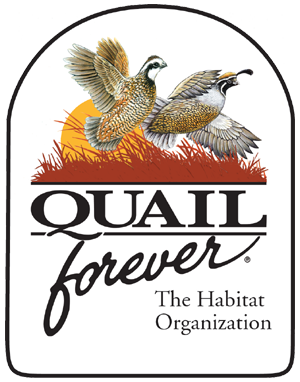A high-profile parasite has been the subject of much speculation lately related to the plight of northern bobwhite quail. But no scientific evidence exists to support a widely held public opinion that eyeworms are to blame for an unexpected decline in the number of these game birds this past year.
Upland game biologist Derek Wiley with the Oklahoma Department of Wildlife Conservation said eyeworms in quail have been reported since 1961. The existence of these parasites is nothing new to researchers.
“There are no studies that can attribute increased mortality of bobwhites to eyeworm parasites,” Wiley said.
Recent research shows that eyeworms were among four common parasites regularly found in bobwhites. Eyeworms, which gather behind the bird’s eyes and feed on blood, were found in around 50 percent of studied birds. Eyeworms are also found in other game birds, including ring-necked pheasants and lesser prairie-chickens, and in nongame birds including mockingbirds.
Wiley said they have been documented in 28 avian species, but there is no scientific evidence that eyeworms are themselves responsible for greater bird mortality.
Talk of eyeworms became more common when quail harvest took a dive for the 2017-18 hunting season after what seemed like an outstanding early summer hatch.
Alan Peoples, the Department's chief of wildlife, said, “Last year, we had good reproduction early. But a good part of our harvest was post-August-hatched birds.” So the question became, what happened to the earlier hatched quail?
“Everybody wants to point the finger at something as a cause,” Peoples said.
Wildlife Department Assistant Director Wade Free has been an avid quail hunter for decades. He said what happened during the 2017-18 quail hunting season has happened before.
“I think there’s been three times in my hunting career where – I call it the quail triangle – where you have the birds going into the fall but then they are hard to find by the opener. This year, the spring weather was looking good – it was almost textbook. And we were in the third year of what research has shown is the big comeback.
“We were in that third straight year of what was looking like good numbers of birds in late summer, and a significant portion disappeared before the season began.”
Many factors combine to influence the boom and bust cycles that bobwhite populations go through naturally.
Hunting in western Oklahoma, Free kept records that showed he only had six great weather days throughout the 97-day season when humidity, moisture and temperature were conducive for dogs to find birds. "While numbers may fluctuate, there were still birds around, but the dry conditions compounded the problem," Free said.
He observed only one morning during winter with frost on his vehicle, a testament to how dry the conditions were most of the time. Because of those dry conditions, Free believes hunters simply weren’t able to find as many birds even though there were quail on the ground in western Oklahoma, despite reported declines.
“When you’re set up to have what looks like a great season, there’s only about 50 things that can go wrong.”
Peoples said weather and habitat have always been the major keys that support good quail numbers. But when a population is stressed by environmental conditions such as drought or extremely high temperatures, parasites can affect overall health.
Free said, “We don’t have enough baseline data over time to equate eyeworms to population declines. We are embarking on some testing for a multitude of things – parasites and disease – over time that will give us a baseline … when we have upswings or downturns as to what that might relate back to.”
Wiley pointed out that quail hunting this past season was better than in 2011 and 2012, and that bobwhite numbers will rebound in time. Free agreed.
“We have birds on the ground, and we remain positive. Quail are a boom and bust species, and although numbers dropped off this year, birds can easily rebound this spring.”
